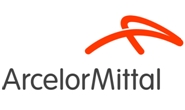Prices

January 31, 2019
Flat Rolled Price Up $40 at ArcelorMittal
Written by Tim Triplett
Steel Market Update has confirmed that ArcelorMittal joined the other major mills in raising flat rolled steel prices this week.
ArcelorMittal notified its commercial team that it is raising base prices a minimum of $40 per ton on all light flat rolled sheet products, effective immediately. The increase applies to all new and unacknowledged orders with ArcelorMittal or AM/NS Calvert. All current published extras continue to apply.
Comparable $40 increases were also announced by Nucor, U.S. Steel, NLMK, California Steel Industries and USS-POSCO. The mills hope to stop, if not reverse, the downtrend in steel prices that began last summer. The benchmark price for hot rolled steel has declined by more than 25 percent since July 2018.







